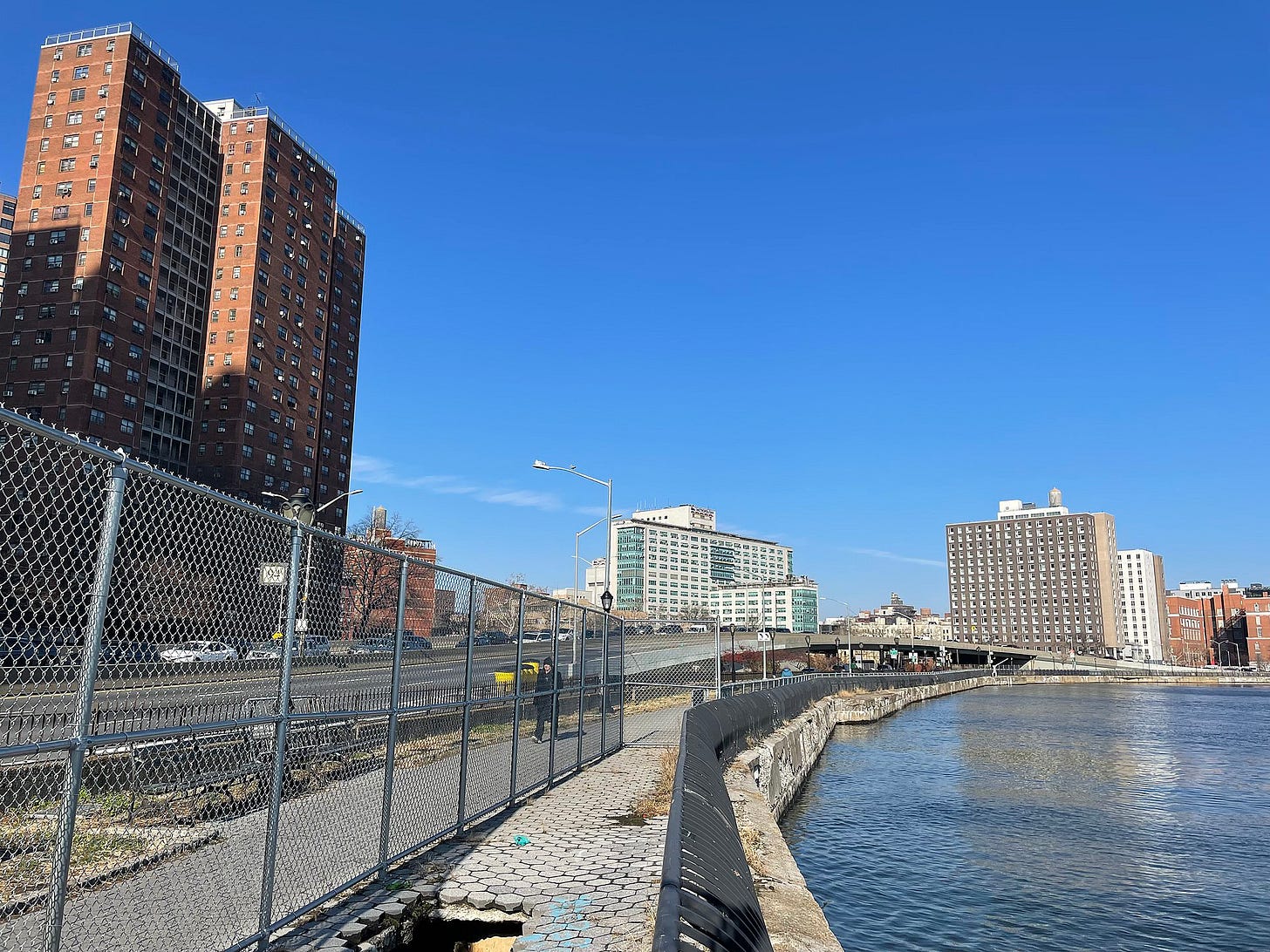It’s A Mad, Mad, Mad, Mad World is a 1963 movie starring Spencer Tracey and a whole coterie of comic actors who witness a road accident, as a result of which the now hapless Jimmy Durante reveals the location of a hidden treasure. The rest of the film is the race to the treasure, which is located under the big double-ya.
This one. No, it’s not a bush.
Frantically they chase around, armed with picks and shovels, not realising they’re all in a copse of four palm trees whose slender trunks describe a perfect “W”.
The Big W in that mad, mad, mad, mad world was in Palm Springs, over on California’s west coast. But over on America’s east coast, in New York no less, they don’t have a Big double-U, but a Big single-U. Well, currently more a Small I. It is a length of seawall that will eventually extend around the borough of Manhattan, forming the aforementioned letter U in aerial profile (for which there are vantage points aplenty in that city). So that when (and not if) there is a repeat hurricane of the likes of Sandy, which produced high water of 14 feet above sea level and flooded 19 billion dollars-worth of real estate, it can blow out its fury to a height of sixteen feet and not broach the defences. So says a recent article in the New Yorker.
Experts do reckon that, even with defences that high, some riverside properties will suffer some damage, but they will be spared the worst. For the worst will, instead of wreaking its wrath upon the moneyed properties of Manhattan, be diverted to other boroughs, perchance the Hispanic hub of Queens, where it’s a safe bet that no Small I, let alone a Big U, is ever likely to be constructed.
Image: The Lower Manhattan Coastal Resiliency, or Big U—CC BY-SA 4.0
Seawalls are increasingly being seen as a device of human ingenuity that will outwit the ravaging forces and powers of our rising seas. As the Maldives disappear under the Indian Ocean, the wealthy who invest in coastline idylls demand coastal protection to preserve their multi-million investments. In turn, the multi-million investments encourage more people to flock to the idyllic coast, assured of the safety of their bricks and mortar. Of course, one mustn’t forget that such bulwarks and bastions enrich the contractors who construct them, if not the councillors who contract them.
It’s tempting to view sea defences as being just like the walls of a swimming pool. However, even the butterflies produced by the likes of Tom Daley and Mark Spitz will not cause waves quite as tumultuous as the Atlantic Ocean’s freestyle.
The responses to climate change, which, as all-too-necessary civil engineering structures, get sold as solutions to climate change, are in many ways as short-sighted as the root causes of the climate change itself. Because climate change is, of course, ever a problem for future generations; and the construction and ultimate destruction, and hence futility, of coastal protection measures is deemed irrelevant. Especially when the contractors who profit from their construction will have long since departed this world by the time the seawall so proudly profited from lies beneath the waves to which it was supposed to form an impenetrable barrier.
The sea is a pernicious beast: block its passage and it will quickly find a new route that might well circumvent the obstacle, but will still seek out a new victim for its wrath. It’ll wreak vengeance on other properties nearby, be they to the left or to the right, or even in churning maelstroms at the base of the barrier erected to stymie it. Like burglary, water can only be diverted. Water cannot be thwarted.
“Even businessmen that rob, and steal, and cheat from people every day. Even they have to pay taxes.”





